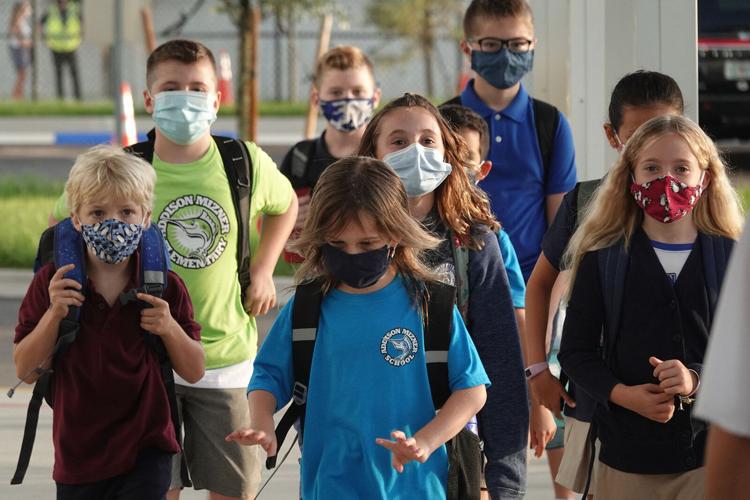After greater than 18 months of college closures and social isolation, the country’s greater than 50 million public college kids are most commonly again at their desks. However two months into the autumn semester, academics and scholars already are announcing they want a destroy.
The grief, anxiousness and despair kids have skilled right through the pandemic is welling over into study rooms and hallways, leading to crying and disruptive conduct in lots of more youthful children and larger violence and bullying amongst teens. For plenty of different kids, who stay their unhappiness and concern within, the pressures of college have turn out to be too nice.
In keeping with the federal Facilities for Illness Keep watch over and Prevention, emergency division visits for suspected suicide makes an attempt amongst teens jumped 31% in 2020, when put next with 2019. In February and March of this 12 months, emergency division visits for suspected suicide makes an attempt have been 51% upper amongst women elderly 12-17 than right through the similar length in 2019.
Final month, the American Academy of Pediatrics, the American Academy of Kid and Adolescent Psychiatry, and the Kids’s Medical institution Affiliation declared that the pandemic-related decline in kid and adolescent psychological well being has turn out to be a countrywide emergency.
On best of social isolation and circle of relatives instability, the scientific teams mentioned, “greater than 140,000 kids in the USA misplaced a number one and/or secondary caregiver, with adolescence of colour disproportionately impacted.”
“Just about each kid within the nation is struggling to a point from the mental results of the pandemic,” mentioned Sharon Hoover, co-director of the College of Maryland-based Nationwide Middle for Faculty Psychological Well being. “Abruptly everyone seems to be speaking about psychological well being. Oldsters, academics and scholars are brazenly discussing it.”
The pandemic might subside, however its psychological well being results shall be round for much longer, Hoover and different mavens say.
“That is why colleges wish to make investments now within the psychological well being and well-being of our children in a wide and complete approach – no longer only for kids with studying disabilities and recognized psychological well being stipulations, however for all scholars,” Hoover mentioned.
One just right factor to return out of the pandemic, Hoover added, is that it decreased the stigma round psychological well being. “We are all feeling it, so it is OK to discuss it.”
Faculty directors and faculty principals know that the one solution to get scholars again heading in the right direction academically is to scale back the psychological well being obstacles to studying, Hoover mentioned. “They are as desperate to spend money on psychological well being assets as somebody. That wasn’t at all times the case.”
Historical investment, new regulations
The pandemic additionally caused the government to supply historical ranges of aid investment for training.
The American Rescue Plan Act and the Basic and Secondary Faculty Emergency Reduction Fund, blended with different 2020 pandemic aid budget for colleges, quantities to greater than $190 billion in training and well being grants to be had over the following 4 years, a few of which may also be spent on psychological well being.
The cash is going to states in response to their school-age inhabitants, however native college districts have decision-making authority over the lion’s proportion of it.
90 % of the cash allotted to states should be reallocated to college districts. Faculties have extensive discretion over spend the cash, so long as 20% or extra is spent on techniques to deal with studying loss, together with summer season college and after-school educational techniques.
No federal grants are particularly earmarked for psychological well being, however in keeping with Hoover, just about all states are spending a part of their proportion of federal aid cash on psychological well being and inspiring college districts to do the similar.
Ohio, for instance, is recommending that faculty districts spend money on partnerships with neighborhood psychological well being suppliers to provide scholars psychological and behavioral well being products and services nearly or at school structures that may be billed to Medicaid or personal insurers.

Clare
Clare is a digital marketing consultant focused on the Society blog. He shares articles to promote them on various social media platforms, including LinkedIn, Google+, and Pinterest.